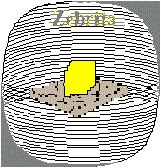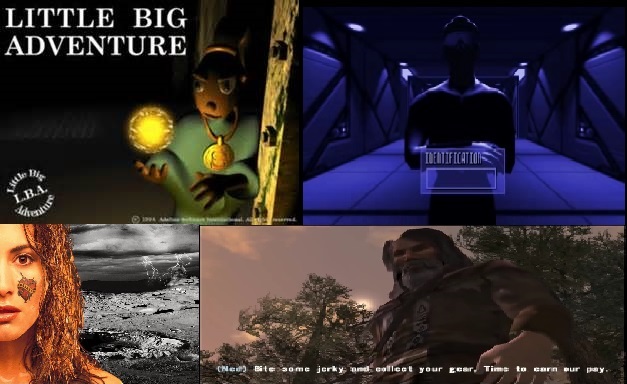BlackShark wrote:The issue with your logic is that the hardware required to compute the second (left and right eye) polygons simultaneously would be so close to the hardware which already does the polygon computing in 2D that It would be silly to expect these units not to be used to increase the raw power of 2D rendering as well. Unless nobody plays mono games anymore, which isn't going to happen any time soon, you will always get a very close to two-fold performance difference between mono and stereo operations, because there is little to no difference between rendering two views simultaneously in one long pass and rendering each view in sequence at twice the speed.
This is a difference between processing the geometry and pixels twice per each frame, and processing geometry only once while generating twice as many pixels.
The closest analogy is running the game at 1920x1080 (2M pixels) versus 2560x1440 (4 M pixels). Most games do not take a 50% hit when rendering at twice the screen resolution, so if you have a graphics part that is able to practically run modern games at 2560x1440/2560x1600 (something like Radeon HD6870 would certainly do quite easily with its projected 10 GFLOPS of processing power), it will also run 1920x1080 stereo with the same speed.
I took some benchmarks from IXBT.com monthly graphics card roundup (which I introduced in
another unrelated thread), using
the latest issue (Apr 2010) and taking results for most powerful cards, GeForce GTX 480 SLI 2x and Radeon HD 5970 CF 2x, in 2560x1600 and 1920x1200 resolutions with either no AA and 4x AA 16x AF, on a very powerful Core i7 975 EE six core 3333 MHz system with 6 GBytes of RAM and Windows 7 Ultimate, to better match future video cards which will be released in 2011 and beyond.
In the end, performance drop for 2560x1600 (4Mpx) versus 1920x1200 (2Mpx) was about 25%-35% in most cases.
Code: Select all
NO AAA AAA
5870 CF 480 SLI 5870 CF 480 SLI
Tropics 76% 69% 72% 67%
Heaven DX10 68% 62% 63% 61%
Heaven DX11 73% 68% 66% 67%
Just Cause 2 73% 80% 67% 75%
FarCry2 80% 85% 73% 77%
CRYSIS DX10 57% 73% 56% 69%
CRYSIS Warhead 60% 81% 59% 75%
3DMark Vantage 74% 67% 72% 66%
Dirt2 85% 94% 80% 90%
DOW2 100% 99% 100% 96%
Absolute FPS figures:
Code: Select all
NO AAA AAA
5870 CF 480 SLI 5870 CF 480 SLI
Tropics 1920 127,6 165,4 87,7 116,1
2560 97,3 113,7 62,9 78,1
Heaven DX10 1920 108,4 126,3 83,0 103,0
2560 73,5 78,3 52,7 63,1
Heaven DX11 1920 67,7 96,7 54,1 78,3
2560 49,2 65,8 35,6 52,1
Just Cause 2 1920 60,8 60,6 52,6 59,8
2560 44,4 48,5 35,0 44,8
FarCry2 1920 149,3 175,9 117,5 163,3
2560 120,1 148,7 86,1 126,3
CRYSIS DX10 1920 53,4 57,7 52,1 55,3
2560 30,2 42,2 29,2 38,3
CRYSIS Warhead 1920 39,0 40,0 38,1 39,3
2560 23,3 32,2 22,5 29,4
3DMark Vantage 1920 20689 23582 17139 21421
2560 15257 15823 12348 14152
Dirt2 1920 126,6 138,9 120,6 132,6
2560 108,0 131,0 96,0 119,2
DOW2 1920 81,6 77,7 81,6 77,7
2560 81,5 77,0 81,4 74,6
(also in attached .XLS file)
2560vs1920.xls
The full graphs (in Russian) and XLS sheet with bechmark results are available:
http://www.ixbt.com/video3/i0410-video.shtml#diags" onclick="window.open(this.href);return false;
http://www.ixbt.com/video/itogi-video/i ... f-0410.zip" onclick="window.open(this.href);return false;
the only visible things that will come from DX11 will be hardware tessellation to improve close-ups and the use of Direct Compute
I wasn't specifically talking about Direct3D version 11. What I'm trying to say is, most titles are not currently designed to take full advantage of "Direct3D 10 architecture" that encompasses Direct3D 10, 10.1 and 11 (where each new version is a strict superset of the previous), since it requires a completely different design philosophy and approach to game art design.
Nvidia has an online book called "GPU Gems 3" which covers many advanced new algorythms that are possible with Direct3D 10. The very first example is the Marching Cubes algorythm which uses voxels and look-up tables for polygonal landscape generation right in the GPU. You can not adopt existing game to this algoruthm without a major redesign of the game engine, design tools, and artwork.
http://http.developer.nvidia.com/GPUGem ... _ch01.html" onclick="window.open(this.href);return false;
Hopefully with the market approval rates of Windows 7, Direct3D 10/11 will enjoy a much broader market share which will make it far more relevant, and more and more developers will switch to Direct3D 10/10.1/11 as their principal rendering target, especially since Direct3D 11 runtime indludes D3D10 Feature Level 9, which is a fallback version of Direct3D 10/10.1/11 for very old cards which onlly support SM 3.0 and below.
This sounds more like optimizing the available resources to balance the available computational power and the bandwidth by choosing between computing in real time and using pre-rendered data than actually being actually able to produce an effect.
Blackshark, textures and texture samplers are not going anywhere even with pixel shaders, and they won't untill (and if) we will be able to run RenderMan shaders in realtime

Things like procedural shader-generated fur are still too computational intensive, and require a different artistic approach, so most current game engines still do a lot of multitexturing. As I said, this might change in next-gen engines.
The only games which had these kinds of effects were those which used hybrid CPU/GPU engines which used the CPU to generate all these effects the GPU simply could not do and the visual difference between the two was simply mind blowing.
Well, why use a hardware solution (shaders) when the developer can program a similar solution using the CPU geometry?

DmitryKo wrote:Given that all DX9 games gained a tremendous performance boost on DX10 cards from this very feature, I don't consider this a benefit from DX10 but rather a benefit from an architecture improvement.
8-O If the architectural improvement was stipulated by Direct3D 10 spec, which Microsoft have been discussed with partners for like 5 years before the release, it cannot be a totally independent development of the architecture which came out of nowhere.
DX10 did not made this architecture mandatory at the hardware level, it could be emulated in the drivers with a previous architecture and the device would still be DX10 compliant
In theory, yes. In practice, that would be quite a stupid thing to do, since it would eliminate many benefits of common shader cores.
I see this situation the other way around : Outdoors are such performance hogs for GPUs that game developers spend extra engine R&D and CPU ressources to spare as much computations as possible
I said exactly just that. The fact is, outdoors are a least as much CPU intensive as GPU intensive.
Nvidia and ATi provided developers toold to help them make sure their engines would keep the GPU units busy actually computing stuff
Yes, but I was talking about "draw overhead" in the sense of performance loss for rasterizing additional view in the GPU, not the extra CPU time spent by the API runtime on non-optimal draw calls.
DmitryKo wrote:I'm going to be the Devil's advocate here : Game developers have the freedom to program their games the way they want.
I consider that if a game developer wants his game to be stereo3D, then he should make his engine to compute the left and right eye views and not program a monoscopic engine hoping some 3D driver or new graphics card architecture will "auto-magically" transform his game into 3D.
Preach, brother!

I say just give them "auto-magical" stereo mode right in the Direct3D runtime.
With proper hardware and driver support, the stereo rendering mode can be just one API call away for the programmer, and no extensive modification to the game engine will be required, since everything you need is already presented to the hardware.
It would be interesting to see how Sony handled stereo rendering in the PS3, however I don't have access to the SDK and don't have a spare
$10 000 (ten thousand dollars) to find out.
You do not have the required permissions to view the files attached to this post.



